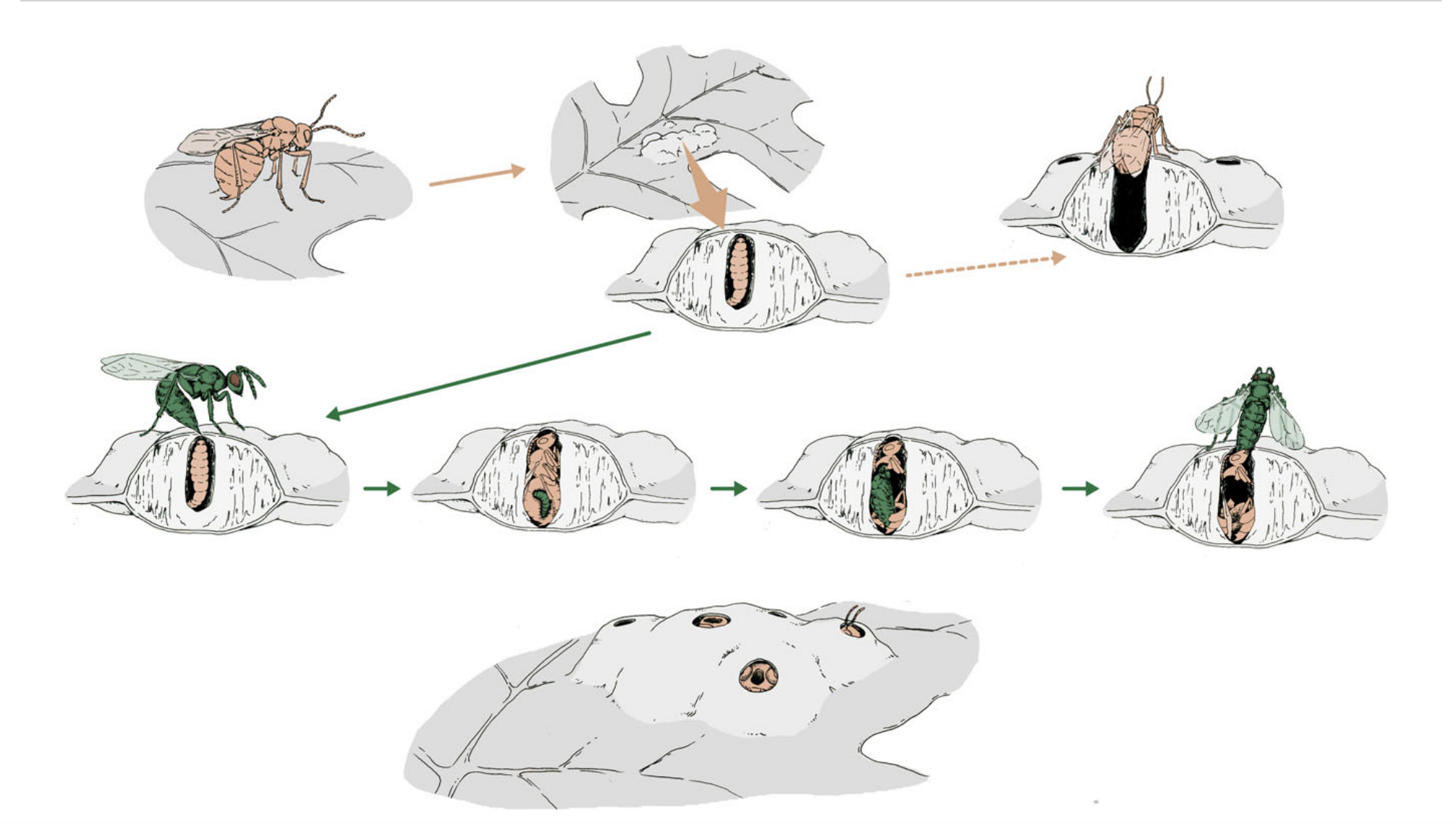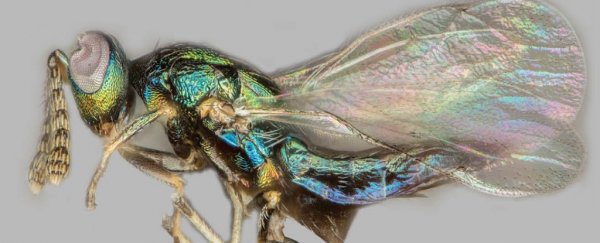The crypt-keeper wasp is hardly a fussy eater. Given the chance, this creepy parasitic insect will chew through the heads of at least seven different species to survive, a new study has found.
Discovered just a few years ago, this gruesome predator (Euderus set) is known as a 'hyper-manipulator' - a parasite that manipulates a parasite that manipulates a host.
From what little we know so far, the crypt-keeper's prime prey appears to be the parasitic gall wasp - known for tricking its plant host into covering its eggs with a gall, or a swelling of nutrients.
These are the so-called 'crypts' in which the crypt-keeper also deposits its eggs. And in doing so, the larvae of the crypt-keeper can thus infect the larvae of the original occupant.
The next step is simple: manipulate the gall wasp so that when it's done developing, it chews a much smaller hole in its nest than necessary. As it tries to scramble out, the wasp's head will then hopefully become stuck, killing the creature in the plugged hole.
Only then can the crypt-keeper eat its way out, right through the other parasite.
 ( Mona Luo)
( Mona Luo)
When the crypt-keeper was first discovered in 2017, it was caught parasitising only one species of gall wasp, Bassettia pallida.
To find out how many others could be vulnerable to this spine-chilling fate, researchers from the University of Iowa collected more than 23,000 galls, encompassing roughly 100 species. Raising the wasps, the team was surprised to find evidence that crypt-keepers were manipulating more than 300 individuals from six previously unknown species of prey.
The added complexity of a hyper-manipulator was thought to limit its range of prey, because such activity requires intense specialisation – but the seven hosts of the crypt-keeper are spread across five genera, which represents a relatively diverse group.
"This pattern of host use is unexpected," the authors write.
"Many insect parasites of plants and animals are taxonomically specialised, and for parasites that manipulate the behaviour of their hosts, the symbiotic intimacy implied by behavioural control might be expected to further restrict host range – though the literature to date is equivocal on this point."
Among all seven gall wasps, in fact, their crypts were found to be more similar than the creatures themselves. This, the authors argue, suggests there's something about the crypts that makes them more vulnerable to attack, as opposed to overlapping characteristics in the host's physical defences.
Parasites that manipulate other parasites are an extremely rare phenomenon that is rarely studied. There's a lot we have yet to learn about them… but how badly do we want to know?
The research was published in Biology Letters.
